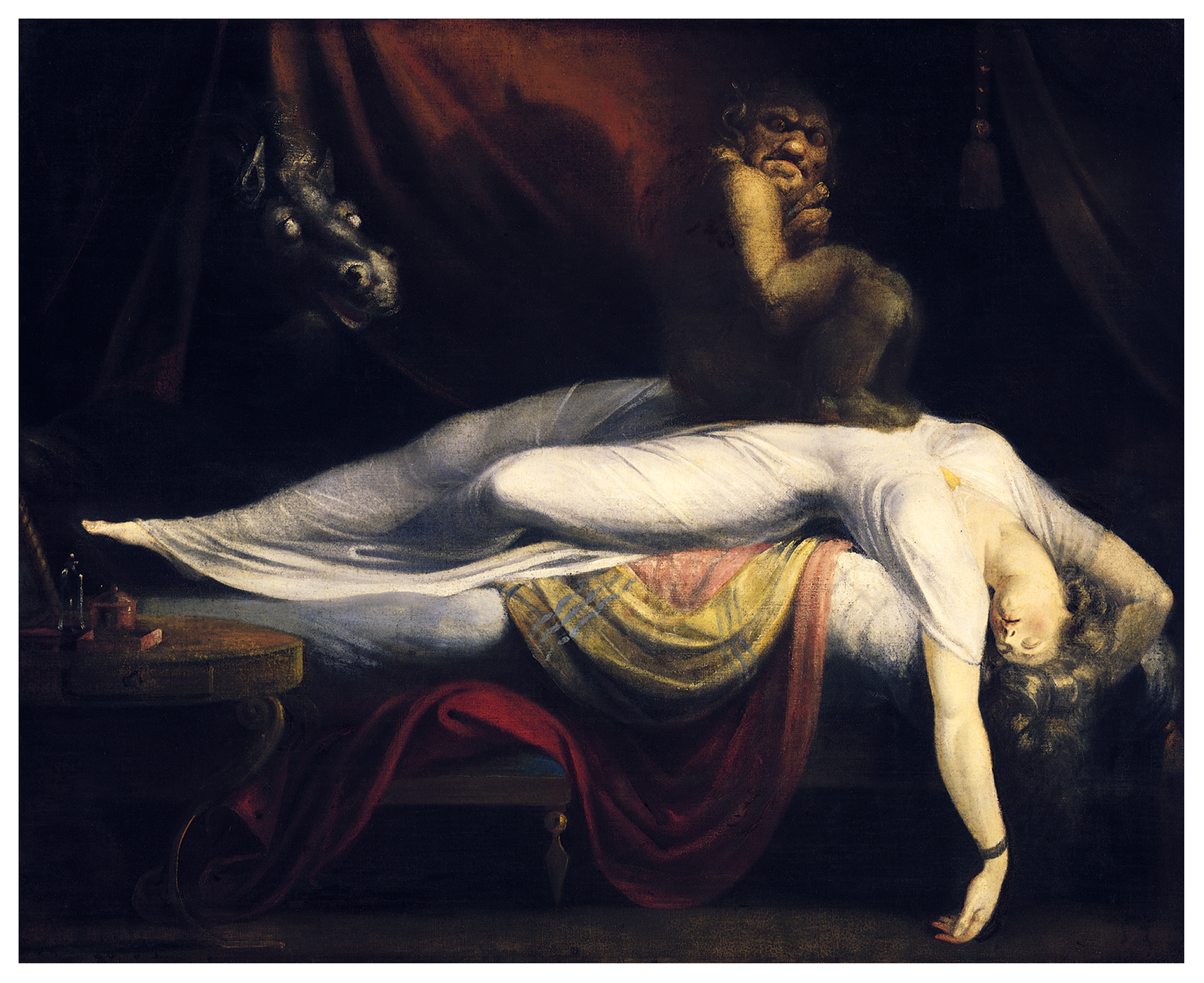Art for the Private Viewer - Nightmare
10:19 PMArt for the Private Viewer
The Broad Usage of Sexual Figures in Art
Curated by Sree Balusu
 |
| Henry Fuseli, The Nightmare, 1781 |
"I was bewildered, and strangely enough, I did not want to hinder him. I suppose it is part of the horrible curse that this happens when his touch is on his victim." Dracula, Bram Stoker
An inundatory combination of horror and seduction, Fuseli's Nightmare portrays a woman trapped and helpless in front of a sex-craving monster. The demon sits atop and crushes her to hold her in place while a devilish horse gazes from the menacingly dark-red curtains. Though she initially fears and resists the demon's advances, the woman eventually submits as the red blanket falls from her bed to the floor. Forced into submission, the woman assumes a revealing position that accentuates her legs and leaves her chest upright as offerings to the hungry demon.
One of the popular interpretations of this painting is its depiction of Henry Fuseli's relationship with Anna Landholdt. Fuseli fell in love with Landholdt, the niece of Johann Lavater (a good friend of his), and intended to marry her. However, Anna Landholdt's father disapproved the proposal to marry his daughter to Fuseli and instead had her married off to a family friend. In a letter to Lavater, Fuseli described a dream he had of Landholdt:
"Last night I had her in bed with me--tossed my bedclothes hugger-mugger--wound my hot and tight-clasped hands about her--fused her body and soul together with my own--poured into her my spirit, breath and strength. Anyone who touches her now commits adultery and incest! She is mine, and I am hers. And have her I will...."
The demon in this painting represents Anna Landholdt's husband who Fuseli imagines as a monsterous figure abusing the woman that is rightfully his. The horse represents Fuseli as he gazes perpetually at the horrific scene and at the woman he can never have.
Fuseli's painting provides interesting contrast to other paintings that depict sensuality, as it portrays this unusual yet fascinating mixture of fear and sex. It is a testament to the thematic flexibility of sex in art.
0 comments